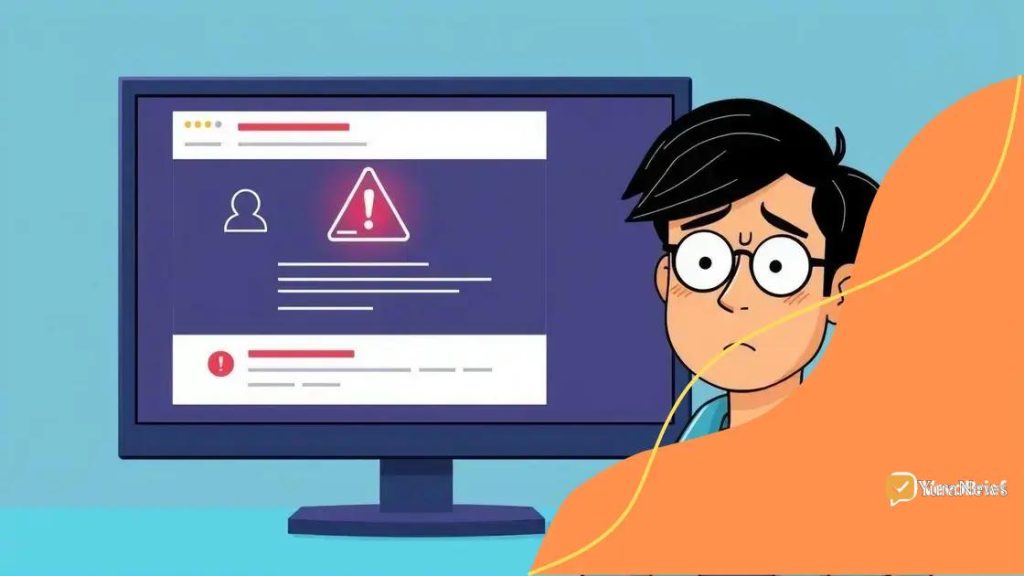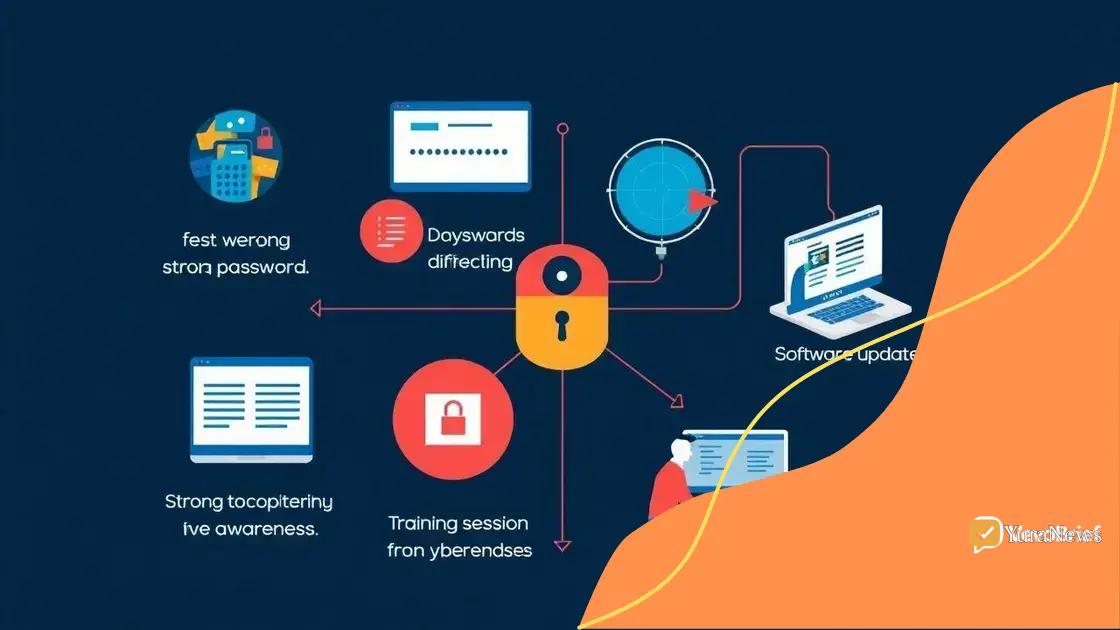Government alerts on new cyber threats: What you should know

Anúncios
Government alerts on new cyber threats provide essential information on protecting your data and responding effectively to cyber attacks through preventive measures and available resources.
Government alerts on new cyber threats are becoming more frequent as the digital landscape evolves. Ever wondered how these threats might impact your online safety? Let’s dive into what you need to know.
Understanding the latest cyber threats
Understanding the latest cyber threats is crucial in today’s digital world. Each day, new vulnerabilities emerge as technology evolves. Knowing what these threats are can help you protect your data effectively.
Anúncios
Types of Cyber Threats
Cyber threats are diverse and can come from various sources. Some of the most common include:
- Malware: This includes viruses and ransomware designed to disrupt your system.
- Phishing: Cybercriminals use deceptive emails to trick you into revealing personal information.
- Denial of Service (DoS): Attackers flood a network so that legitimate users cannot gain access.
- Insider Threats: Sometimes, the threat can come from within your organization, whether intentional or accidental.
Each type of threat requires different strategies to combat them. Businesses and individuals must stay informed and vigilant. Cyber hygiene practices, such as regular software updates and using strong passwords, can safeguard against these risks.
Emerging Trends in Cybersecurity
As technology develops, so do the tactics that cybercriminals use. For example, artificial intelligence (AI) is increasingly used both for attacks and for strengthening defenses. Cybersecurity systems now utilize AI to monitor networks and detect unusual activities.
Anúncios
Moreover, the rise of the Internet of Things (IoT) brings unique challenges. With more devices connected to the internet, the potential points of attack increase. Effective security measures must extend beyond traditional computers and smartphones to include all connected devices.
In summary, understanding the latest cyber threats is essential for anyone who uses technology. By staying informed and practicing good cybersecurity, you can significantly reduce the risk of falling victim to these threats.
Common tactics used by cybercriminals
Cybercriminals use various tactics to exploit vulnerabilities and gain access to sensitive information. Understanding these common tactics can help you stay one step ahead and protect your data effectively.
Phishing Attacks
One of the most prevalent tactics is phishing. Cybercriminals send emails that appear to be from reputable sources, aiming to trick individuals into providing personal information. These emails often contain links to fake websites that look legitimate, leading users to unknowingly submit their credentials.
- To spot phishing attempts, look for:
- Mismatched URLs — Always check the address bar for discrepancies.
- Urgent requests for password updates — Legitimate organizations rarely ask for sensitive information via email.
- Misspellings or poor grammar — Phishing emails often contain mistakes.
Being cautious and verifying the sender’s identity can help prevent falling victim to phishing.
Malware Distribution
Another tactic used by cybercriminals is the distribution of malware. This malicious software can infiltrate your system through infected attachments or downloads. Once installed, malware can steal sensitive data, monitor your activities, or even take control of your device.
Preventing malware infections is vital. Keep your software updated and always use antivirus protection. Additionally, avoid downloading files from unknown sources to minimize the risk.
Social engineering is a tactic that revolves around manipulating individuals. Cybercriminals often exploit human psychology to gain trust and encourage sensitive information sharing. This technique can take various forms, such as impersonating a colleague or support staff.
By being vigilant and skeptical of unsolicited requests, you can significantly reduce the likelihood of falling for such schemes. Regular training on recognizing these tactics enhances your ability to defend against them.
How to strengthen your cybersecurity measures

Strengthening your cybersecurity measures is essential in today’s digital age. Implementing effective strategies can greatly reduce the risk of cyber attacks.
Use Strong Passwords
One of the simplest ways to enhance your security is by using strong passwords. A strong password should include a mix of uppercase and lowercase letters, numbers, and special characters. Avoid easily guessable phrases, such as birthdays or common words.
- Consider using a password manager to generate and store complex passwords.
- Change your passwords regularly to prevent unauthorized access.
- Enable multi-factor authentication for an additional layer of protection.
The combination of these practices significantly increases the difficulty for cybercriminals trying to access your accounts.
Keep Software Updated
Regularly updating your software is crucial. Software developers frequently release updates that patch vulnerabilities. Failing to install these updates leaves your system exposed to attacks.
Make sure to update operating systems, antivirus programs, and applications to protect against recently discovered threats. Automating updates whenever possible simplifies this process.
In addition to software updates, it’s important to educate yourself and your team. Regular training on identifying phishing attempts and understanding cyber hygiene can help everyone stay alert to potential threats.
Creating a culture of security within your organization not only protects your data but also empowers employees to take active roles in safeguarding information.
Finally, consider conducting regular security assessments. These assessments can identify gaps in your cybersecurity measures and address them proactively, keeping your systems safe and secure.
Government resources for cybersecurity guidance
Government resources for cybersecurity guidance play a crucial role in helping individuals and organizations protect themselves from cyber threats. Various agencies offer information and tools to enhance security.
Federal Trade Commission (FTC)
The FTC provides resources designed to help consumers and businesses understand online security. Their website includes tips on protecting personal information and recognizing scams, along with guides specific to various industries.
- Visit the FTC’s Cybersecurity page for:
- Information about common cyber threats.
- Best practices for securing devices.
- Consumer alerts and updates on emerging threats.
This information is vital for keeping both personal data and business information safe.
Cybersecurity and Infrastructure Security Agency (CISA)
The CISA is another essential resource, focusing on national cybersecurity initiatives. They provide a wide range of materials aimed at improving security practices.
Some key offerings include:
- Alerts about current cybersecurity threats and vulnerabilities.
- Guidelines on implementing security measures.
- Access to free tools and resources for risk assessments.
By leveraging these resources, individuals and organizations can enhance their understanding of cybersecurity and better guard against threats.
Additionally, each state has its own resources, often through the state government’s website or office of information security. Many states offer local workshops and training sessions to educate residents about cybersecurity.
Utilizing government resources not only equips users with vital knowledge but also helps create a more secure digital environment for everyone.
What to do if you fall victim to a cyber attack
If you fall victim to a cyber attack, it’s important to act quickly to minimize the damage. The steps you take can significantly impact recovery and security.
Identify the Type of Attack
The first step is to determine what type of cyber attack you are experiencing. This could be anything from ransomware locking your files to unauthorized access to your accounts. Identifying the issue helps in forming a response strategy.
- Check for suspicious activity on your accounts.
- Look for signs of malware or ransomware on your devices.
- Identify any unauthorized installations or applications.
Understanding the attack allows you to respond appropriately.
Isolate Affected Systems
Once you’ve identified the attack, isolate any affected systems immediately. This can prevent the spread of malware and limit potential damage.
Disconnect devices from the internet to stop further intrusion, and do not use shared networks until security is confirmed. If you are on a work network, inform your IT department right away so they can take necessary precautions.
Change Passwords
Next, change passwords for accounts you believe may be compromised. Make sure to use strong, unique passwords for each account to enhance security.
Consider utilizing a password manager to help create and store strong passwords safely. Enabling multi-factor authentication is also highly recommended to add an extra layer of security to your accounts.
Report the Incident
Reporting the incident is crucial. Contact local law enforcement or the appropriate cybersecurity authorities to report the attack. If the attack involves financial information, notifying your bank is important. They can help monitor your accounts and prevent further loss.
Finally, after dealing with the immediate issues, consider strengthening your cybersecurity measures. Review your current practices, install security updates, and educate yourself on potential threats. Taking these proactive steps can help prevent future incidents.
FAQ – Frequently Asked Questions about Cybersecurity
What should I do first if I fall victim to a cyber attack?
Identify the type of attack and isolate affected systems to prevent further damage.
How can I recognize a phishing email?
Look for mismatched URLs, urgent requests for personal information, and spelling or grammar mistakes.
What are strong passwords and why are they important?
Strong passwords consist of a mix of letters, numbers, and symbols. They are important for securing your accounts against unauthorized access.
Where can I find government resources for cybersecurity?
Visit agencies like the FTC and CISA for guides, best practices, and updates on emerging cyber threats.